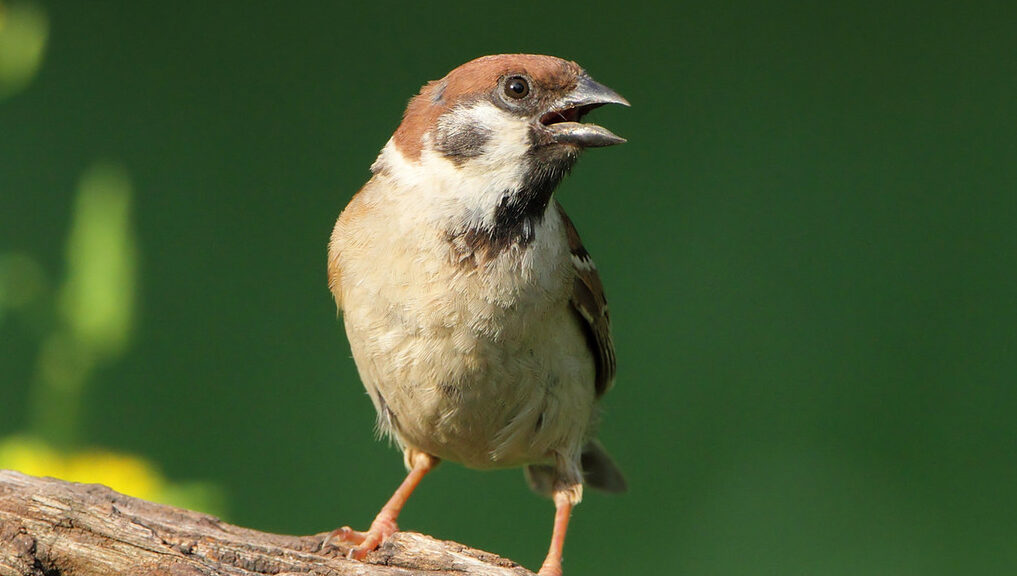Eurasian Tree Sparrow, Passer montanus
Bill Rowe
This year marks a special sesquicentennial: it was in 1870 that North America’s first Eurasian Tree Sparrows were released in Lafayette Park, St. Louis City, as part of an effort by German immigrants to import the birds of their homeland. As we now know, that kind of transplantation is misguided at best: most of the imports don’t survive, and those that do can displace native species and cause havoc with our ecosystems. Luckily, the Eurasian Tree Sparrow, or ETS, has created no apparent problems. It did survive, spreading around the St. Louis area, through a swath of Illinois to the north and east, and eventually up into Iowa, but it didn’t explode throughout the U.S. like its close cousin, the House Sparrow, and later the European Starling. It has remained a local specialty, and while it is now common across a fairly wide region, St. Louis is still the one major metro area where visiting birders can easily find it and put it on their North American life lists. In that respect, it’s our one claim to fame. Note: The ETS, as a naturalized resident, is covered in all major field guides, alongside the House Sparrow but far from our native sparrows like the Song Sparrow; that’s because they are in separate, not-closely-related families, the Old-World sparrows Passeridae and the New-World Passerellidae.
IDENTIFICATION: The male and female ETS look alike and are readily told from the male House Sparrow by their smaller black bib, chocolate-brown crown (gray in House Sparrow), conspicuous black spot on a white cheek, and partial white collar. Juveniles look similar but more faded. The ETS gives chirping calls that are much like those of a House Sparrow, but also a staccato chatter, chit-chit-chit. At least once, a local ETS has mated with a House Sparrow and produced hybrid young that show a mix of features.
ST. LOUIS STATUS: The ETS is found all over our area in suburbs, parks, farms, and other places with plenty of trees and bushes; it will nest in bird boxes as well as tree cavities. It is a year-round resident that doesn’t seem to migrate in or out, although in the winter it will often gather in large flocks in brushy and weedy spots.
Learn more and listen to the songs and calls of Eurasian Tree Sparrow here.




